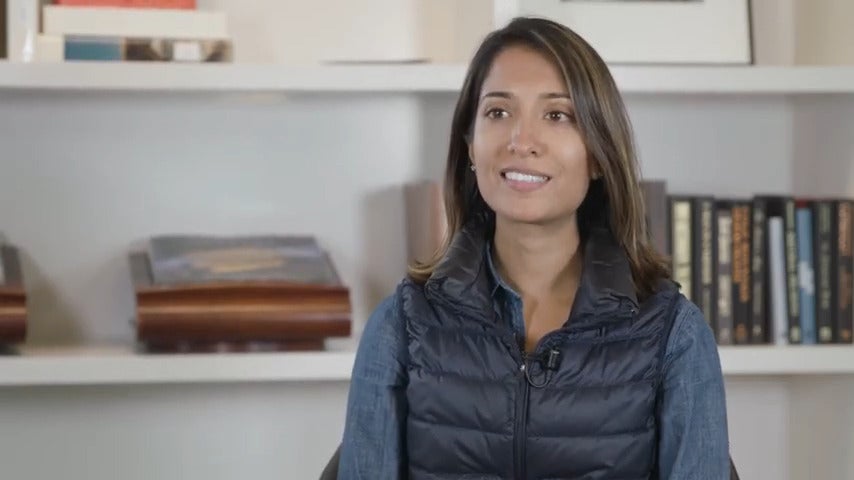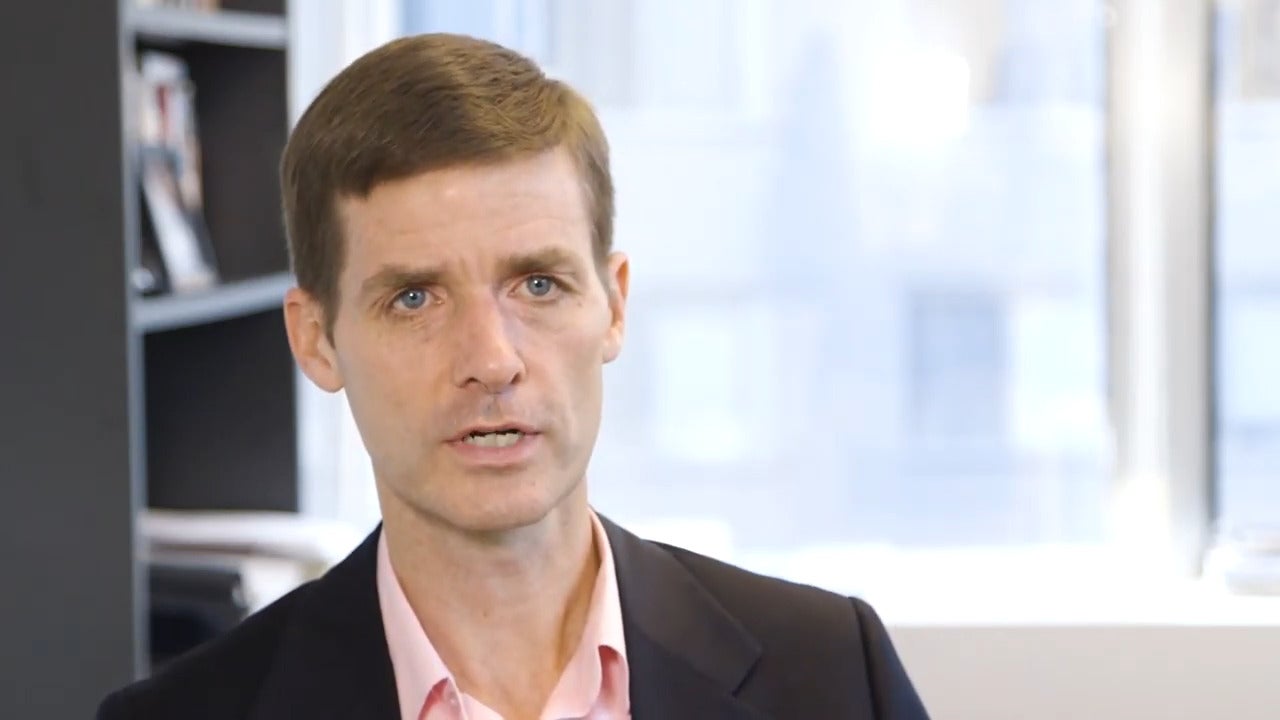Earlier this month, the Aspen Financial Security Program (FSP) announced that Ray Boshara, senior adviser and director of the Center for Household Financial Stability at the Federal Reserve Bank of St. Louis, has joined FSP as a senior fellow. In anticipation of joining the team, he sat down with Ida Rademacher, executive director of the Aspen Financial Security Program.
Ida Rademacher: The Aspen Financial Security Program is thrilled to form this special collaboration with you and the Federal Reserve Bank of St. Louis. The arrangement is rather unprecedented, so can you tell us what attracted you to the idea of joining us as a Senior Fellow?
Ray Boshara: Stated simply, this fellowship is appealing because both the St. Louis Fed and Aspen are committed to thought leadership around key issues impacting families, communities and the economy. This applies to the Center for Household Stability, which I direct at the St. Louis Fed, as well as to the Financial Security Program. Both initiatives are engaged in forward-looking research and ideas to promote the financial well-being of families, with a particular focus on family balance sheets.
When senior leaders at the St. Louis Fed and I were considering my Aspen fellowship, they stressed that thought leadership requires one to be in a room with smart, curious, and innovative thinkers who can broaden your perspective and challenge or sharpen your ideas. Well, that’s exactly what the Financial Security Program and others at Aspen have to offer. Of course, Aspen’s betting that the Center and Fed perspectives I bring—along with my nearly 25 years in the asset-building field—can enhance their ideas and initiatives as well.
I would add that, as the economic, political, technological, and demographic landscape is being upended—leading to new levels of financial instability among millions of American families—promising, breakthrough ideas are needed now more than ever. In my 2009 book with Phil Longman, The Next Progressive Era, we observed that while our nation faced a similar landscape in the late 1800s, it led to a 30-year burst of innovation and experimentation that produced new institutions and public policies that improved the lives of Americans for generations to come. This historical experience suggests that diverse teams and institutions should come together now as well to leverage this unique moment in our nation’s history.
Can you share some of what you are planning to do as an FSP Fellow?
In general, I hope to think and write more about the future of building wealth. It seems like, given all the broader, systemic changes I just mentioned, how families build wealth will have to change as well.
For example, Aspen’s Financial Security and Economic Opportunities Programs are already thinking hard about the NEW RELATIONSHIP BETWEEN WORK AND WEALTH, and FSP’s inaugural cycle of the EXPANDING PROSPERITY IMPACT COLLABORATIVE, or “EPIC,” examined the implications of growing income volatility.
While there’s room for the fellowship topics to evolve organically, let me mention two areas of mutual interest. The first one is actually EPIC’s next area of focus: household debt. Working closely with EPIC’s director Joanna Smith-Ramani and the whole EPIC team, we’ll be looking at the types of debt that contribute most to financial instability, see what’s driving those debts, and what policymakers and others can do about it. Of course household debt is complicated: some debts build wealth, while others deplete it, just as some debts contribute to economic growth while other forms take away from it. One of the reasons the St. Louis Fed established the Center for Household Financial Stability was to examine the entire family balance sheet, not just savings and assets (as the field did prior to the Great Recession). Our view is that household debts are, in general, relatively under-studied but increasingly burdensome on families and national economic performance.
The second issue I’ll be looking at is new forms of risk pooling or insurance. As Aspen FSP’s stakeholders know, the basic idea behind social insurance, or the 20th century safety net, is to protect against the loss of income. For example, we all are at risk of losing a job or losing the ability to work, so we pay into unemployment insurance and into Social Security so that parts of our income can be replaced if necessary. However, we don’t really pool for the risk of losing an asset, or for that matter the risk of owning an asset—such as a home or an education—that can lose value. Those risks are very real: $16 trillion in family wealth was eviscerated in the Great Recession, and the recoveries have been very uneven—in general, non-whites, less-educated and younger Americans have yet to recover the wealth they lost in the recession. In addition, according to other recent Center research, even non-white families with college degrees have lost wealth over the last generation.
Moreover, the need for and challenges around building wealth have, like the risks, gone up for millions of struggling families. Yet there’s no way to build wealth without taking some risks. The question, then, is this: should that risk fall entirely on the individual or family? My answer is probably not, but we clearly need more research and discussion to figure that out.
There’s a lot a great innovation around this topic, but it hasn’t yet been brought together around one table or under the theme of financial security or asset building. So, working with Aspen, I hope to begin to figure out how to pool the risk of an asset loss, and to explore how this big idea might eventually be considered as a new component of our nation’s safety net.
What do you think it will take to make household financial security a national policy priority that compels action?
Well, as recent polls from the Fed, Pew, CFSI and others suggest, household financial security is already a concern and priority for millions of American families. I think the key question, then, will be how our nation’s leaders address financial insecurity. While both the Fed and Aspen refrain from any partisan or political activities, what we can do well is generate some of the best possible ideas to understand and respond to growing household financial insecurity. Not surprisingly, we both believe—and the evidence supports—that measures to build savings and wealth, as well as measures to reduce debt, should be among the key responses. Both institutions can also play a constructive role in convening key leaders and thinkers to help craft promising responses. As I mentioned already, now is the time to offer big, bold and promising ideas, which is what I believe Aspen and our Center at the Fed are in a positon to offer.
I’d like to add that that St. Louis Fed is one among many of the Federal Reserve Banks engaged in forward-looking, serious research around critical issues affecting families, communities and the nation. To name a few, in January the Minneapolis Fed launched the OPPORTUNITY AND INCLUSIVE GROWTH INITIATIVE. Last fall the Philadelphia Fed announced the AGENDA ON POVERTY AND PROSPERITY. And my colleagues at the Board have convened (twice, so far) a roundtable of leading minority scholars, non-profits and advocates around the racial wealth gap. I’ll being doing my best to keep up with all of the great research and ideas coming out of these exciting initiatives!
What are you working on now at the Federal Reserve Bank?
Quite a bit, not surprisingly! Let me just mention just three areas of work—research, books coming from previous research, and events.
First, research. With the Center’s excellent research team—Bill Emmons, lead economist, and Lowell Ricketts, lead analyst—and one or two others we hope to bring on, we’ll be digging in to the 2016 Survey of Consumer Finances (SCF), the Fed’s triennial survey of family wealth. With that new data, we’ll be issuing afresh our Demographics of Wealth series, which closely examines how race and ethnicity, age and birth year, and education predict family wealth. I wrote about some of our prior research on this topic in a book called What It’s Worth, published by the San Francisco Fed and CFED.
We’ll also continue our research into the debt side of the balance sheet. This includes (1) the EPIC initiative already mentioned that we’re collaborating on with Aspen; (2) issuing our “QUARTERLY DEBT MONITOR” publication, which tracks various forms of household debt in the St. Louis Fed’s Eighth District and compares those trends to national trends; and (3) our second and final “Tipping Points” research symposium, which is commissioning papers from leading economists to see if we can begin to construct a tipping point (or points) for when debt moves from being productive or wealth-building to becoming destructive and wealth-depleting for families and the economy. The first TIPPING POINTS SYMPOSIUM was held last June in New York. The papers, and an executive summary are available HERE.
Second, I am working on books generated by previous research. Just last month we published, in a special issue of the St. Louis Fed Review, the papers and discussions from our May 2016 research symposium, Does College Level the Playing Field? In case you were wondering, the answer is no, at least not in terms of wealth; the point of the symposium was to see why, since 1992, a college degree predicts building wealth for whites and Asians, but predicts losing wealth for blacks and Hispanics. We will continue exploring this critical and disturbing issue. We also just published, in partnership with the Federal Reserve Board of Governors, a BOOK ON ECONOMIC MOBILITY, based on a system-wide Fed research conference we helped organize a few years ago. Dave Buchholz at the Board and I wrote the book’s INTRODUCTION AND SUMMARY, in which we capture some of the book’s key contributions to the field of economic mobility.
Finally, we’re planning several events this year. On May 23, the St. Louis Fed’s “Dialogue with the Fed” series will sponsor an event on our Does College Level the Playing Field symposium and papers. It will be webcast live here. In addition, we are planning events—potentially in St. Louis, Memphis, and Washington, D.C.—on the economic mobility book I just mentioned. We’re also launching a series of book events, and plan so far to feature Lisa Servon’s new book, “The Unbanking of America,” as well as “The Financial Diaries: How American Families Cope in a World of Uncertainty,” by Jonathan Morduch and Rachel Schneider. Finally, we hope to convene leading scholars this fall to discuss the relationship between family structure and wealth. In my view, this is an issue that hasn’t received enough attention in our field.

